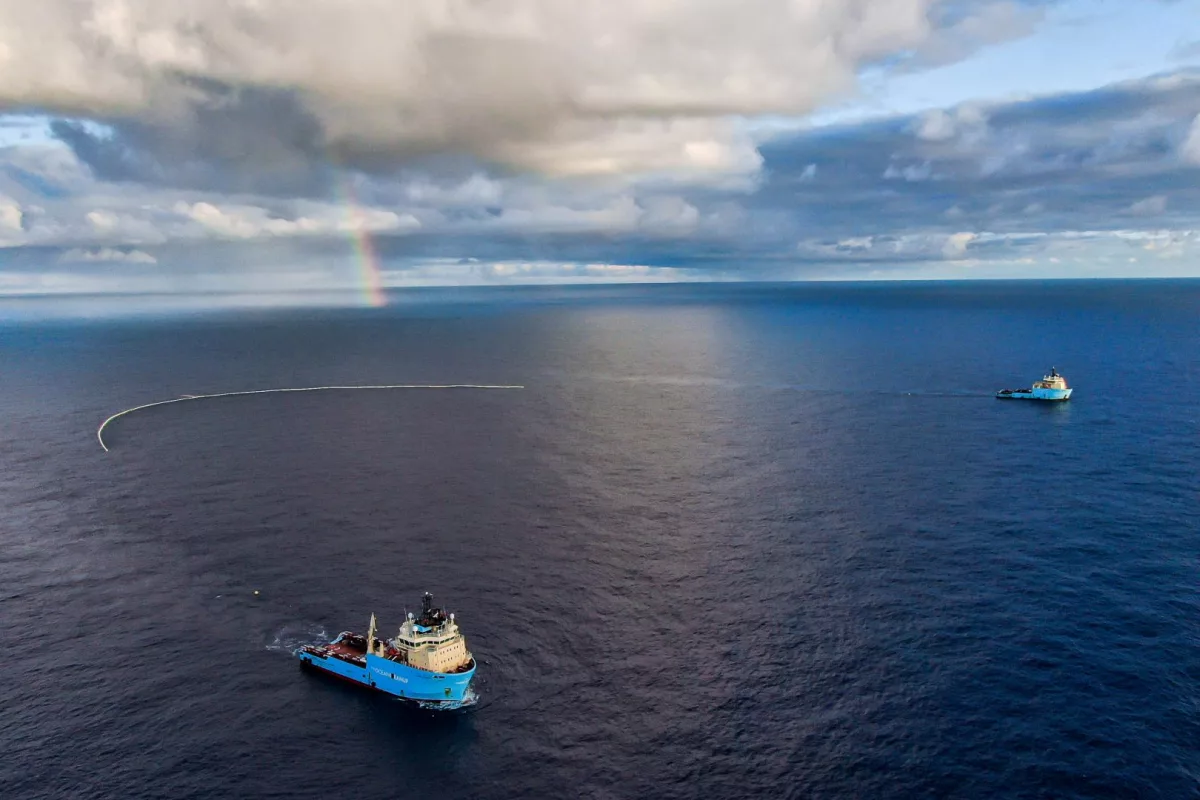With the amount of plastic swirling around in the ocean, wouldn't it be handy if the boats charged with cleaning it up could use the trash to fuel their own operations? A new study has crunched the numbers on such an approach and found that ships carrying reactors to convert the waste into "blue diesel" could indeed power themselves, which would reduce the need for trips back to shore and the associated burning of fossil fuels.
Trash-collection systems designed to gather plastic waste like that found in the Great Pacific Garbage Patch are gathering steam, largely thanks to the efforts of the Ocean Cleanup Project. While these were originally conceived as floating systems that passively sweep up the trash with the help of ocean currents, the latest versions use vessels powered by fossil fuels to tow the barriers across the ocean. The collected trash then needs to be ferried back to shore more than a thousand of miles away, further adding to the carbon footprint of the operation.
The idea that plastic waste can be converted into usable fuels is one scientists have been exploring for a while, with one interesting example coming in 2017. This research sought to build on technologies that break down plastics into diesel-like fuels in large-scale facilities, by instead having the process take place in a mobile reactor that could be integrated into a ship.
This latest study on the topic is authored by scientists from Harvard University, Worcester Polytechnic Institute and Woods Hole Oceanographic Institution, and centers on a technique called hydrothermal liquefaction. This involves heating up plastic to temperatures of 300–550 °C (572 to 1,022 °F) and subjecting it to pressures 250 to 300 times that found at sea level, which reduces the material to oils that can act as building blocks for "blue diesel," a plastic-derived fuel said to have an energy density similar to marine diesel.

The model used by the scientists to explore the feasibility of this shipboard conversion of plastic waste into fuel sees booms placed 25 km (15 miles) apart throughout the Great Pacific Garbage Patch, which they say allows for optimal collection efficiency and would allow installation of the maximum number that can be serviced by a single ship in a year.
As the ships pass through a boom, the plastic gathered there would be fed into an onboard processing system via a conveyor belt, where it would be shredded and the salts and other impurities removed before its conversion into blue diesel. In this way, the study raises an interesting secondary advantage over current collection solutions that involve workers manually scooping plastic into bags, in that the process would essentially be automated.
The fuel generation of such a system would depend on the concentration of plastic in the water underneath. The scientists calculate that best-case scenario, this shipboard conversion could not only produce enough fuel to power the hydrothermal liquefaction process and the vessel itself, but actually produce an excess of 480 percent, which could be stored onboard and used to power trips back to shore.
While the study does provide plenty of food for thought and the authors conclude self-powered cleanup may indeed be a viable solution to our massive ocean plastics problem, they note we need to fill gaps in what we understand around the Great Pacific Garbage Patch to reduce any uncertainty. They also note that burning blue diesel would release greenhouse gases, though calculate that over a 10-year period this would amount to 0.02 percent of the global carbon budget.
The research was published in the journal Proceedings of the National Academy of Sciences.
Source: TechXPlore





